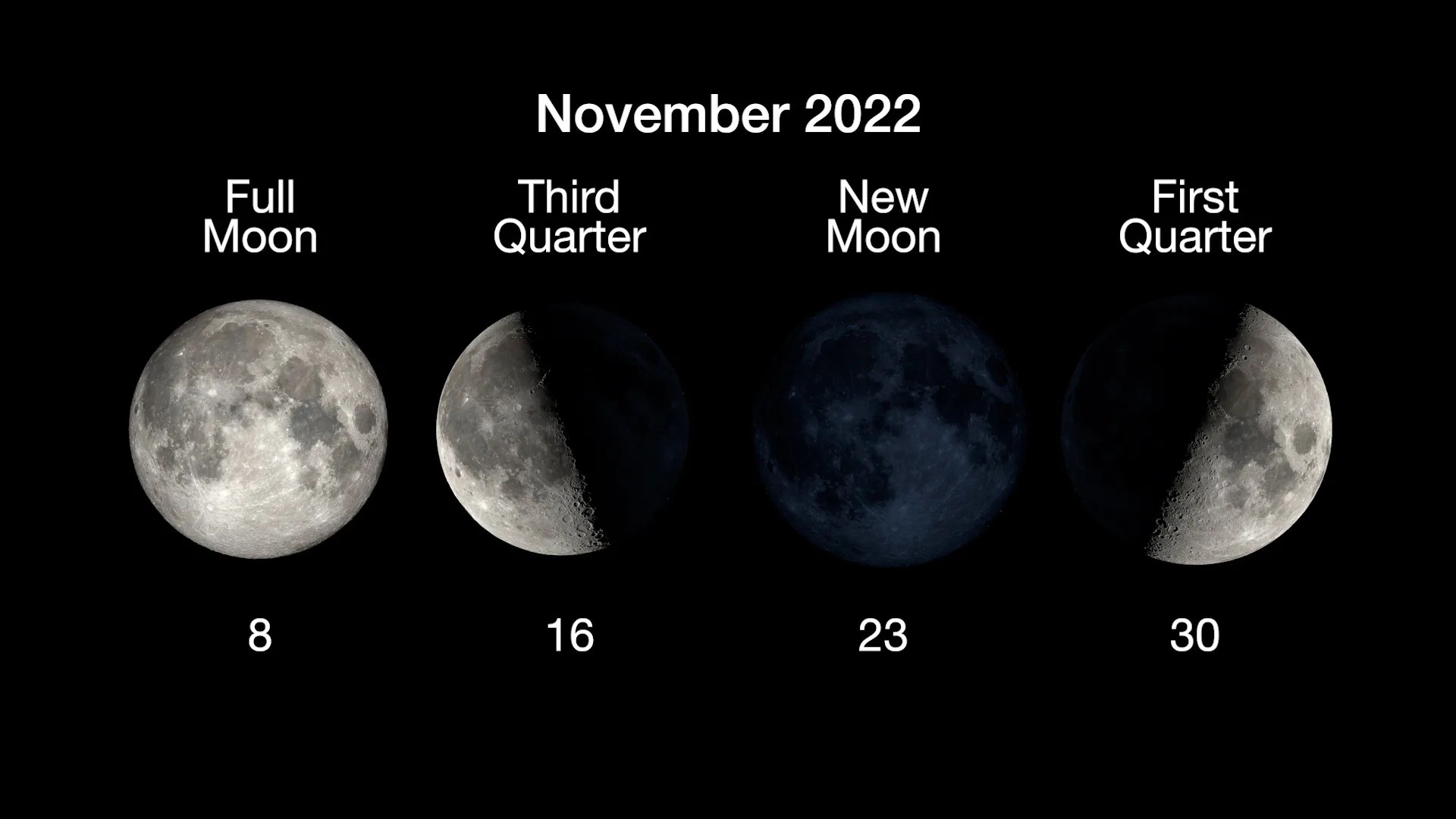What’s Up: November 2022 Skywatching Tips from NASA
| Credit | NASA/JPL-Caltech |
|---|---|
| Language |
|
Quick Look: The Moon goes all red, plus Leonid meteors!
The Leonids will battle against moonlight this year, but anyone with a view of the Moon in the a.m. on Nov. 8 can enjoy a lunar eclipse.
- November 8 – Full moon
- November 8 – Total lunar eclipse in the hours before sunrise
- November 11 – The Moon appears directly between Mars and bright blue-white star Elnath in the west before sunrise
- November 20 – In the hour before sunrise, find the crescent Moon above bright star Spica in the southeast
- November 18 – Look straight overhead for Leonid meteors after midnight. The Moon is about 35% full, and will diminish the fainter meteors.
- November 23 – New moon
- November 28 – The crescent Moon hangs beneath Saturn in the southwest after sunset
- All month – The Leonid meteor shower is active throughout November, and peaks between midnight and dawn on the 18th.
What's Up for November? A lunar eclipse, the moon and planets, and the Leonid meteors.
A total lunar eclipse is on the way, to provide a little celestial magic, early on the morning of November 8th. The eclipse will be visible to viewers in North America, the Pacific region, Australia, and Eastern Asia – anywhere the Moon is above the horizon while the eclipse is happening.
For observers in the Eastern time zone of the U.S. and Canada, the partial eclipse begins a little after 4 a.m. It reaches full eclipse about 5:15 local time, and the Moon then sets while still in eclipse for you. For observers on the West Coast of North America, that translates to the partial eclipse beginning just after 1 a.m., and reaching full eclipse by about 2:15 a.m. You'll be able to see the entire eclipse unfold before sunrise, weather permitting, as the Moon exits the dark part of Earth's shadow (called the umbra) a few minutes before 5 a.m.
During a lunar eclipse, you'll likely notice that you can see a lot more faint stars, as the usually brilliant full moon dims to a dull red.
During a lunar eclipse, you'll likely notice that you can see a lot more faint stars, as the usually brilliant full moon dims to a dull red. And during this eclipse, viewers with binoculars can spy an extra treat – the ice giant planet Uranus will be visible just a finger's width away from the eclipsed Moon.
Check your local details to find out if the eclipse is visible from your area, and find lots more eclipse info from NASA at the address on your screen.
In the pre-dawn hours of November 11th, you’ll find the Moon directly between Mars and bright bluish-white star Elnath. Elnath is the second brightest star in the constellation Taurus, after reddish Aldebaran, and it forms the northern horn of the bull. You'll find that Elnath is about the same brightness as the star Bellatrix in nearby Orion, where it forms one of the hunter's shoulders.
On November 20th, in the hour before sunrise, look toward the southeast to find a slim, crescent Moon hanging right above bright bluish star Spica. It's a giant star, 10 times the mass of our Sun, and 12,000 times more luminous. Fortunately for us, it's located 260 light years away.
And in the evening sky, on November 28th, a beautiful crescent Moon hangs beneath Saturn in the south after sunset.
The Leonid meteor shower is active throughout November. It peaks after midnight on the 18th, with something like 15 to 20 meteors per hour under clear, dark skies.
On the peak night for the Leonids this year, the Moon will be about 35% full, meaning it will interfere with your ability to see the fainter meteors.
The shower's name comes from the constellation Leo, the lion, from which its meteors appear to radiate. The meteors are dusty bits of debris left behind by comet Tempel-Tuttle as it orbits the Sun. This comet was actually discovered twice, independently.
On the peak night for the Leonids this year, the Moon will be about 35% full, meaning it will interfere with your ability to see the fainter meteors. However, Leonid meteors are often bright, with trails (also called trains) that persist for a couple of seconds after they streak across the sky.
And while the Moon will be rising in the east with Leo around midnight local time, it's actually better to view the sky away from the meteors' apparent point of origin, by lying back and looking straight upward, as any meteor trails you see will appear longer and more spectacular.
Here are the phases of the Moon for November.

Stay up to date with all of NASA's missions to explore the solar system and beyond at nasa.gov. I'm Preston Dyches from NASA's Jet Propulsion Laboratory, and that's What's Up for this month.
